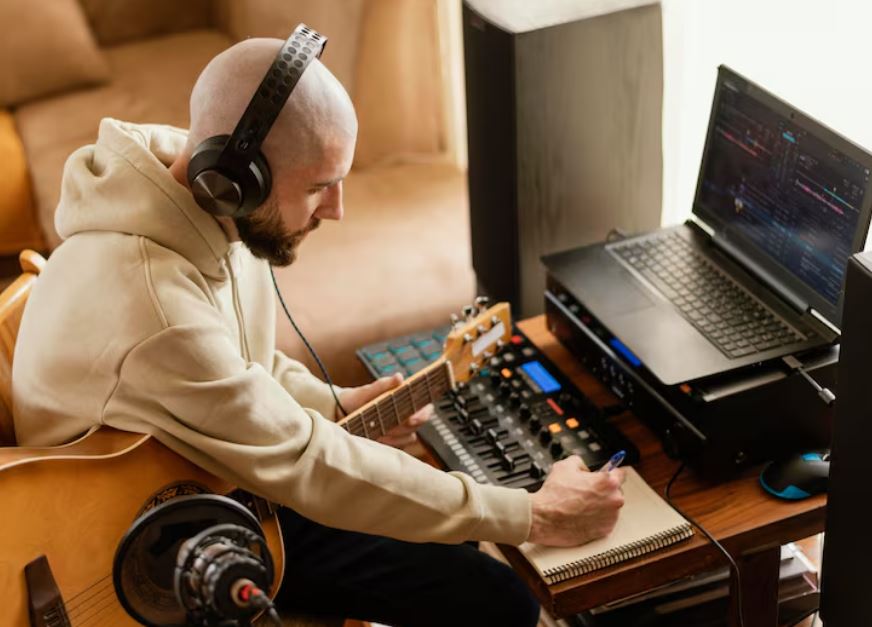
Alternative music radio stations have subtly made a strong resurgence in the last ten years, earning new respect as cultural hubs, tastemakers, and havens for artists. These spaces tell stories, elevate community voices, and provide a remarkably human counterpoint to automated algorithms—they are more than just places to hear a new song.
Stations like New York’s WFUV and Seattle’s KEXP have gained the trust of listeners who want something different from the norm by broadcasting with purpose. Their playlists combine classic and contemporary music, and their DJs are curators rather than merely announcers. Live studio performances by KEXP have gone viral in recent years, bringing indie upstarts to a worldwide audience. Long before they made their late-night TV appearances, artists like Phoebe Bridgers and Mitski were featured here.
Top Alternative Music Radio Stations: Broadcast Style and Reach
| Station Name | Location or Platform | Key Focus and Notable Features |
|---|---|---|
| KEXP 90.3 FM | Seattle | Known for artist-led programming and iconic live sessions with a raw, immersive vibe |
| WFUV 90.7 FM | New York | Offers a tasteful blend of adult alternative, indie rock, and emerging singer-songwriters |
| BBC Radio 6 Music | UK/Digital | Offers a deep, eclectic selection of punk, post-rock, and experimental alternative |
| Radio Paradise | Online | Expertly curated, ad-free, genre-fluid with global indie and alternative flavor |
| AccuRadio | Online | Remarkably effective at offering genre-specific alt-rock stations from the ’80s to today |
| ALT 98.7 | Los Angeles | Mainstream-leaning with frequent spins of trending alt-pop and rock tracks |
| SiriusXM Lithium 34 | Satellite | Dedicated to 90s alternative, delivering nostalgia through grunge and alt legends |
| WBER 90.5 FM | Rochester | Strong local focus with an impressively loyal alt rock audience |
| KXNA 104.9 FM | Fayetteville | Maintains underground feel with a regional slant and non-corporate playlists |
| The Colorado Sound | Colorado | Public radio gem that balances indie classics with progressive new releases |
These alternative radio stations are valuable because of their curation in an era where algorithmic recommendations drive the majority of media consumption. For example, AccuRadio has done a remarkable job of categorizing alternative rock by tempo, emotions, and decades. While “Alternative Now!” concentrates on today’s genre-bending chart climbers, its “Alternative Rock Classics” station embodies the spirit of 90s rebellion.
For those who were raised on the hypnotic drone of The Smashing Pumpkins or the scratchy vocals of Kurt Cobain, SiriusXM’s Lithium 34, which focuses on 90s alternative icons, creates an echo chamber of nostalgia. However, stations like BBC Radio 6 Music and Radio Paradise provide new viewpoints that go beyond nostalgia. People who listen intently and are interested in producing an emotional experience—like making a mixtape that instantly lifts your spirits—curate their programming.
These stations are surprisingly inexpensive when compared to premium streaming services, and they provide something more valuable than limitless skips: trust. Public radio stations like The Colorado Sound, which uphold an open mission of discovery rather than merely entertainment, are significantly bolstering that trust.
Many of these stations are now globally renowned taste icons, having transitioned from local underground status over time. For instance, BBC Radio 6 has established itself as a global mainstay thanks to its daring fusion of avant-garde, post-rock, ska, and punk music. It has developed a devoted following not only in the UK but also internationally by providing airplay to lesser-known musicians.
The rejection of homogeneity is what makes this new wave of alternative radio so novel. These stations prefer to break format rules, but platforms such as Spotify frequently direct listeners into limited, genre-locked lanes. In the same hour, one might hear a long-forgotten Sonic Youth song from 1987 followed by a 2023 shoegaze hit. Listeners experience radio as a living room and living archive where they are personally welcomed.
Many of these stations are expanding their reach through strategic partnerships. Regularly uploaded to YouTube, KEXP sessions receive millions of views. WFUV organizes small-scale concerts in collaboration with nearby New York venues. These are movements rather than merely passive listening experiences.
When talking about their own influences, celebrities frequently mention these stations. Before commercial stations noticed, Billie Eilish publicly thanked the DJs of BBC Radio 6 for supporting artists like her. Similarly, independent filmmakers often use the soundtracks from stations such as WFMU or KXNA, utilizing their distinctive programming to evoke feelings that are not able to be evoked by polished Top 40.
Alternative music radio offers structure without being inflexible in the context of contemporary music consumption, where listeners are usually overloaded with options. A single feature on WBER or ALT 107.3 can cause a significant increase in fan base for up-and-coming artists. Radio airplay frequently creates longer-lasting interest and deeper engagement than playlist placements, which fade after a week.
Even smaller stations like KXUL or KLPI are now drawing listeners from all over the world by incorporating streaming features and mobile apps. Audiences weary of digital polish are drawn to their unadulterated charm and genuine localness. And they can now compete with the giants on an equal digital basis because of platforms like TuneIn and Live365.
Through these stations, the popularity of emotionally charged music genres like alt-folk, dream pop, and emo revival has grown dramatically in recent years. They can highlight anything from hyperpop experiments to new-wave revivals because of their extraordinary versatility. Essentially, they anticipate trends rather than merely reacting to them.
These stations are increasingly being seen as forward-thinking pioneers rather than as outdated relics by listeners who are drawn to stories, danger, and authenticity. They provide a heartbeat that algorithm-fed playlists do not. Alternative radio is once again emerging as the lifeblood of music culture thanks to its human DJs, regional flair, and dedication to up-and-coming voices.
